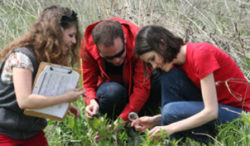Every January, the SciStarter team begins the new year with a look back to the past. What kinds of stories did we tell in the past year, and which ones were our readers’ favorites? Below we’ve highlighted ten of our most popular posts from 2016. Check out what you might have missed and share with your friends!
Augmented Reality in Citizen Science to Connect with Reality

What can citizen science learn from augmented reality technologies like Pokémon Go? Hear from Caren Cooper in this piece from the summer.
Science in the Skies: Studying Clouds with CitSci

Nothing beats cloud-watching—possibly the easiest way to participate in science. Hear from Sharman Apt Russell on the majesty of clouds and the science behind S’COOL. (photo: Elroy Limmer)
SciStarter’s Citizen Science Gift Guide

The holidays may be over, but that doesn’t mean you can’t treat yourself to a new tool to help you explore science! Check out our gift guide for our top ideas.
Making Citizen Science Tools Discoverable and Accessible

Hear from Erica Prange about the new SciStarter Tools Database, where we aim to make it easier for citizen scientists to find the right project AND the necessary tools to participate. (photo: Lea Shanley)
Autoimmune Diseases Affect Millions of Americans: Here’s How Citizen Science Can Help

Autoimmune disease affects over 50 million Americans. The new Autoimmune Citizen Science app is helping to address the multifaceted symptoms and treatments confronting people with autoimmune diseases.
Poké Around With Citizen Science

Still enthralled by Pokémon Go? Find ways to contribute to science while battling at gyms and finding local PokéStops. (photo: Eduardo Woo/ CC BY-SA2.0)
PocketLab + SciStarter = a [citizen] science lab that fits in your pocket.

With PocketLab you can fit a whole science lab in your pocket! Use it to measure motion, acceleration, angular velocity, pressure, altitude, temperature and more.
Celebrate Pollinator Week with Citizen Science

Even if it isn’t Pollinator Week, you can still celebrate the birds, bees, beetles, and other animals that provide essential ecosystem services. Get started with these 6 projects. (photo: Wendy Caldwell)
Why it’s OK to fail: empowering students to discover

Failure happens and it’s not all bad—sometimes, students learn best when things don’t go as planned. A willingness to accept failure encourages students to test boundaries and make new discoveries. Hear from Lea Shell on the importance of this process in discovery through citizen science. (Photo: Lea Shell CC BY-NC 2.0)
An Unlikely Journey into Citizen Science

SciStarter founder Darlene Cavalier shares her compelling story of discovering citizen science as a way for ordinary people to contribute to science. This blog post is an excerpt from her co-edited book.
Thanks for making 2016 a great year on the SciStarter blog! We look forward to making new discoveries with you in 2017!
Best,
The SciStarter Team.

